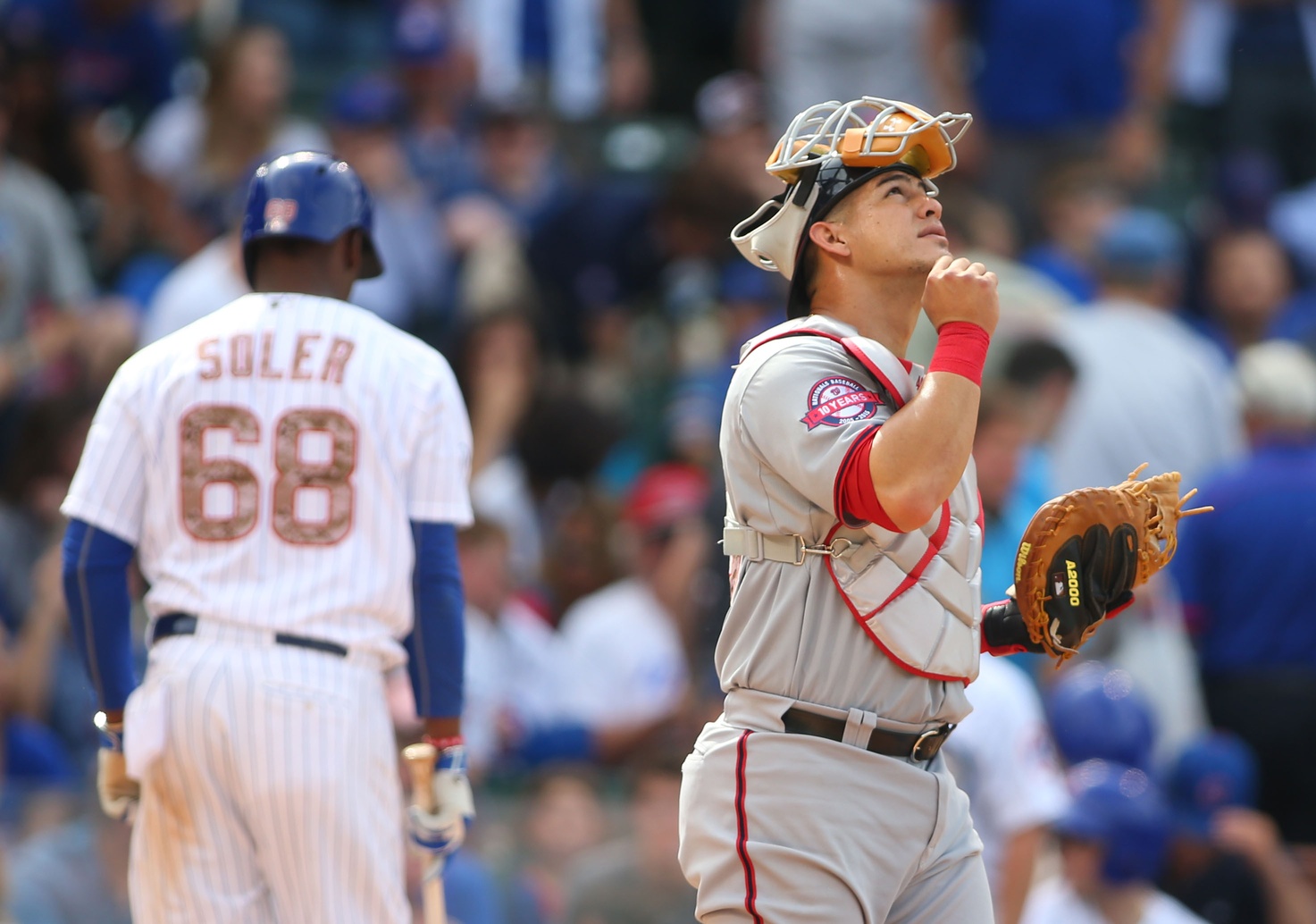Photo courtesy of Caylor Arnold-USA TODAY Sports
Did you notice that the Chicago Cubs went a week without notching a hit with runners in scoring position last week?
It’s true. From Friday—the Matt Szczur “single” on which Gregory Polanco did the chicken dance—until the following Friday, the Cubs went through an 0-for-31 stretch with runners in scoring position. You probably didn’t notice because the Cubs managed to go 3-2 in the games sandwiched in the middle.
After an 0-for-6 in Wednesday’s series finale loss to the Nationals, though, the Cubs’ woes continued. That they went 1-for-13 with runners in scoring position against the Nationals this week was probably obscured by the fact that the one hit was this Addison Russell walk-off double.
In other words … it’s been a bad couple weeks for the Cubs with runners in scoring position, even if you haven’t heard folks crying out in anguish about the problem.
Indeed, it’s been an issue all year for the Cubs. Consider the following Cubs offensive numbers (through Wednesday’s game), first in all situations, and then with runners in scoring position, together with their ranking in baseball:
- .241 BA (22nd) / .220 BA (29th)
- .705 OPS (16th) / .663 OPS (27th)
- .310 wOBA (16th) / .287 wOBA (27th)
- .306 BABIP (9th) / .288 BABIP (18th)
- .146 ISO (13th) / .114 ISO (26th)
To be sure, as a high strikeout team, the Cubs will always be less effective with runners in scoring position than the average team (the Cubs’ 25.4 percent K rate in all situations nearly matches their 26.1 percent K rate with runners in scoring position, and each is worst in baseball). But, as you can see from the numbers above, very little of the Cubs’ struggles with runners in scoring position can be explained by their penchant for striking out.
In short, the Cubs have been a dramatically worse offensive team with runners in scoring position.
The sample remains just two months worth of games, so I won’t yet endorse panic that the youthful Cubs are the kind of team that struggles with the pressure of runners on base. As much as reasonable minds agree that “clutch,” insofar as it is defined as the ability to be better in critical situations, does not exist, most agree that the ability to remain steady and perform to the best of your ability in all situations is a skill.
Which reminds me: All else equal, hitters are supposed to be better with runners on base. The reasons are myriad and probably range from certain to debatable (defenses are less able to optimize positioning, pitchers pitch out of the stretch, pitchers often stay closer to the zone, and, of course, if the pitcher has given up baserunners, he might not be at his best), but the numbers are inarguable.
For example, consider that the average OPS this year throughout baseball is .709. In the National League, it’s a touch lower at .705. With runners in scoring position, however, those numbers increase significantly to .742 and .735.
Even the Cubs, themselves, live into this truism on the other side of the ball. Cubs pitching boasts a 3.55 FIP, .239 BA, .293 BABIP, 23.4 percent K rate and 6.7 percent BB rate in all situations. With runners in scoring position, those numbers worsen to 3.71 FIP, .258 BA, .339 BABIP, 25.2 percent K rate, and 9.9 percent BB rate. As you can see, only the strikeout rate improves, but that’s been more than offset.
As is often the case with late-May articles like this, you can go only so far with the discussion. Some of this will change relatively quickly by way of normalization. Maybe even most of it.
The Cubs do have a young offense, and maybe they will have to learn to slow the game down a bit in those higher-stress situations (though it’s worth noting that guys like Anthony Rizzo, Kris Bryant, and Addison Russell have not been appreciably worse with runners in scoring position than they’ve been overall).
For now, though, I chalk this up to a curiosity, and something to follow in the coming months. If the Cubs have a sudden outburst of offense with runners in scoring position, you can count me as unsurprised.
